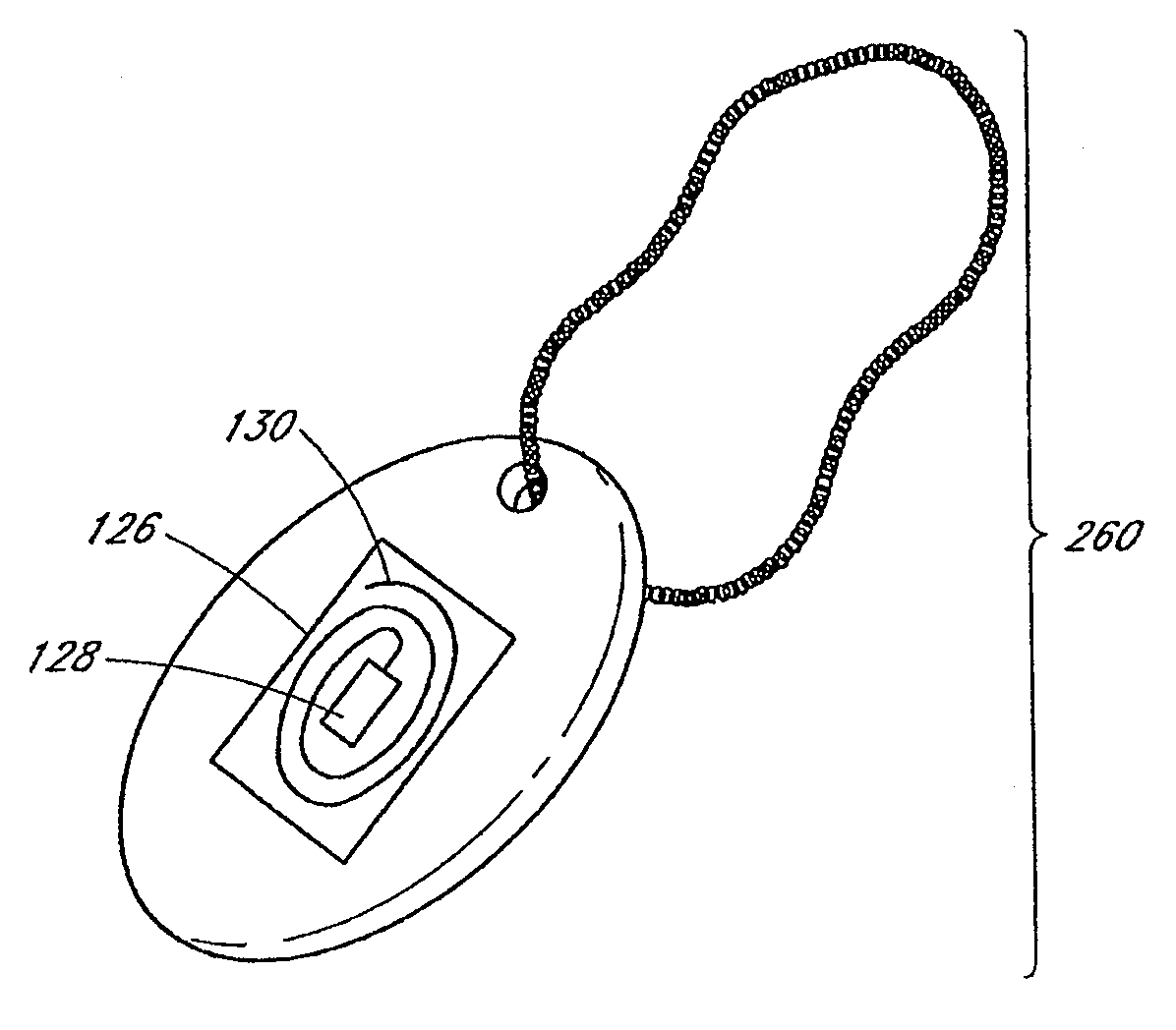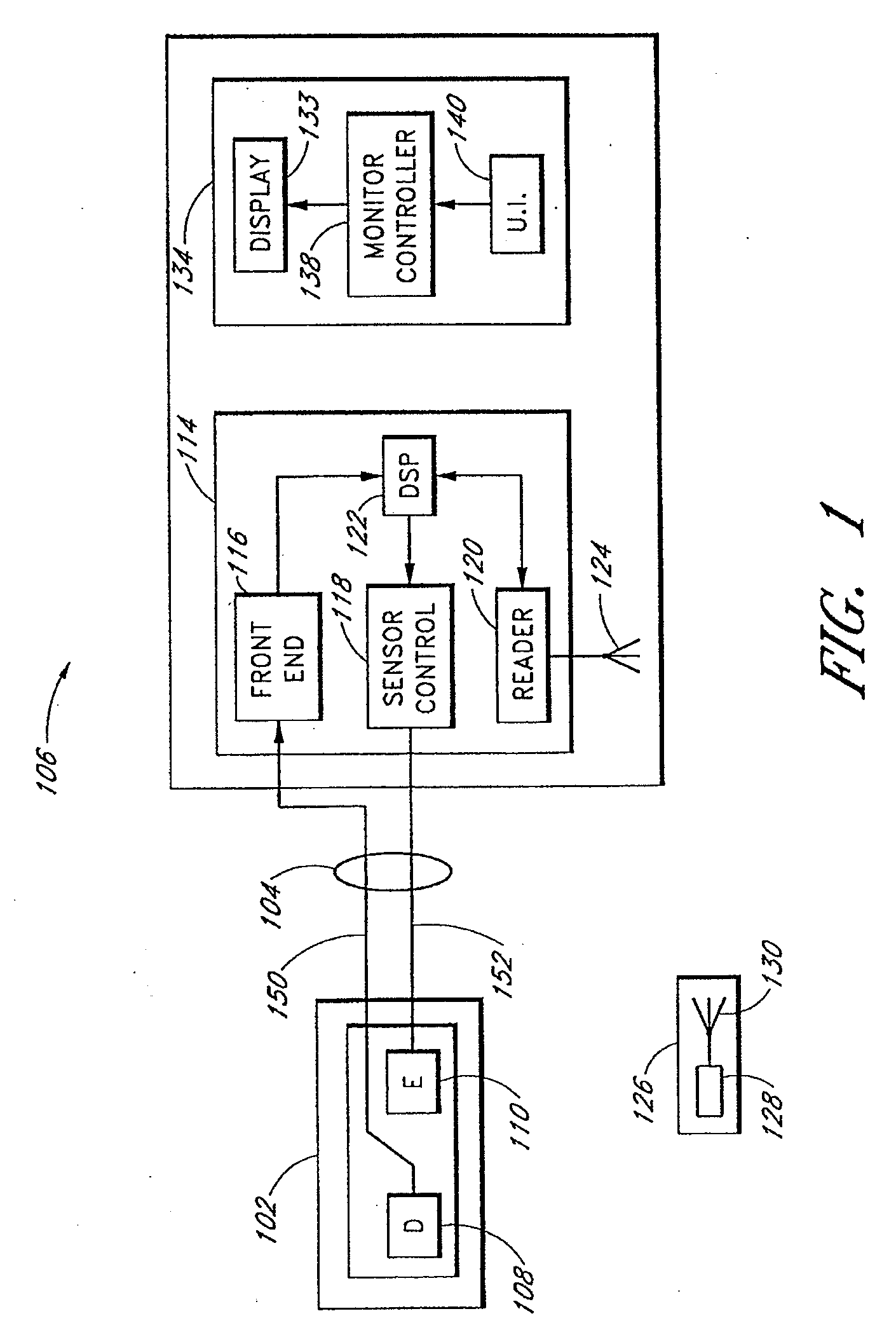Patient monitor using radio frequency identification tags
a radio frequency identification and patient monitor technology, applied in the field of radio frequency identification tags, can solve the problems of recording loss or damage, other medical workers must utilize a limited amount of resources, and other problems, to achieve the effect of reducing drawbacks and transporting patients with less risk
- Summary
- Abstract
- Description
- Claims
- Application Information
AI Technical Summary
Benefits of technology
Problems solved by technology
Method used
Image
Examples
Embodiment Construction
[0023] A patient monitor, such as a pulse oximeter, generally comprises a sensor component and a processing component that processes signals received from the sensor component. In an embodiment, the monitor displays physiological data in some format, such as on an electronic display. In situations when it is impossible or impractical to utilize a patient monitor to monitor one patient. It is advantageous to store patient data and / or some or all sensor data, processed data, trend data, encoded data of any or all of the foregoing, or the like for later reading or updating. Accordingly, an embodiment of the disclosure comprises a patient monitoring system including a sensor, a processing unit, and the RFID tag. The RFID tag comprises an information element, such as an integrated circuit, coupled with an antenna. In an embodiment, the processing unit communicates with an antenna capable of broadcasting and / or receiving electromagnetic signals. The patient monitoring system may broadcast...
PUM
 Login to View More
Login to View More Abstract
Description
Claims
Application Information
 Login to View More
Login to View More - R&D
- Intellectual Property
- Life Sciences
- Materials
- Tech Scout
- Unparalleled Data Quality
- Higher Quality Content
- 60% Fewer Hallucinations
Browse by: Latest US Patents, China's latest patents, Technical Efficacy Thesaurus, Application Domain, Technology Topic, Popular Technical Reports.
© 2025 PatSnap. All rights reserved.Legal|Privacy policy|Modern Slavery Act Transparency Statement|Sitemap|About US| Contact US: help@patsnap.com



